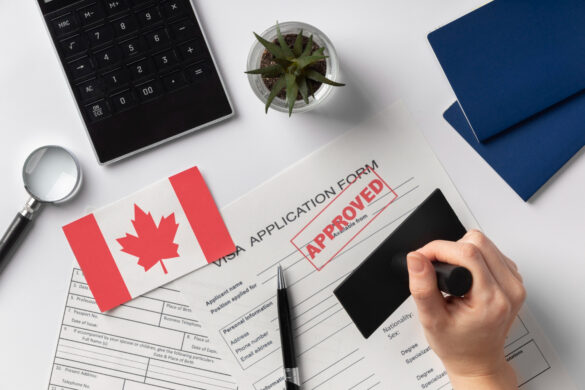 The Value of Preschool Workbooks
The Value of Preschool Workbooks
Introducing preschool workbooks into your child’s early education is like opening a door to a world of learning and development. These workbooks play a significant role in helping young children develop their cognitive, motor, and social skills. For kids just beginning their educational journey, preschool workbooks can serve as a foundation for a lifelong love of learning.
- Encourage early literacy and problem-solving skills.
- Support fine motor development through activities like tracing and drawing.
- Foster social skills by teaching children how to follow instructions.
According to studies, early literacy activities can provide substantial benefits for children’s brain development. Engaging with these workbooks can prepare children for more formal education, making it easier for them to grasp new concepts later on. Read more about early literacy benefits.
What Makes a Big Preschool Workbook Unique?
Big preschool workbooks have unique features that set them apart from regular-sized workbooks. These books are typically designed with a comprehensive approach, catering to a child’s diverse needs and interests.
Key characteristics include:
- Colorful, engaging illustrations that captivate young minds.
- Progressive activities that grow with the child, offering increasing challenges.
The comprehensive nature of big preschool workbooks offers children the chance to develop several sets of skills simultaneously. This variety is crucial in early education, as learning through diverse activities can enhance a child’s ability to adapt and learn. Explore the benefits of varied learning activities.
Incorporating workbooks into your child’s routine can transform their learning experience, making education an exciting adventure rather than just a task.
Exploring Different Pre K Workbooks
Pre k workbooks offer a wonderful variety of learning opportunities tailored to young children’s educational needs. Here’s a closer look at the diverse types of workbooks available:
- Sensory Workbooks: These focus on enhancing children’s sensory experiences with activities that involve touch, sight, and sound. Engaging children in sensory activities can significantly improve their cognitive and motor skills. Learn more about sensory learning.
- Thematic Workbooks: These are designed around specific themes, such as animals, transportation, or nature. They spark interest in children while teaching important concepts.
- Seasonal Workbooks: These reflect different times of the year, offering activities related to holidays, weather changes, and more. This type of workbook helps children connect their learning with real-world events.
By offering diverse topics and activities, pre k workbooks cater to various learning styles and interests, making education more engaging and effective for young learners.
Preschool Learning Books: Building Knowledge Foundation
Preschool learning books are essential tools for developing foundational skills in young children. Here’s how they support early learning:
- Age-Appropriate Content: These books are specifically designed to align with the developmental stages of preschoolers, ensuring that the content is both engaging and understandable.
- Integration with Other Preschool Tools: Preschool learning books often complement other educational materials, creating a cohesive learning experience. By combining books with activities and games, children can explore different ways of learning.
- Skill Development: They play a crucial role in building early literacy, numeracy, and problem-solving skills—laying a strong foundation for future academic success.
By incorporating preschool learning books into daily routines, parents can nurture children’s curiosity and support their growth in a fun and educational environment.
Benefits of Pre K Activity Books
Pre k activity books offer a fun and engaging way for young children to learn. They provide an interactive experience that helps preschoolers develop important skills. Here’s how these activity books can benefit your child:
- Interactive Learning: These books often include activities like puzzles, coloring pages, and matching games that make learning engaging. This interaction captures a child’s attention more effectively than traditional learning methods.
- Fine Motor Skills: Through tasks like coloring and tracing, pre k activity books help improve fine motor skills. These skills are crucial for tasks like writing.
- Problem-Solving Abilities: Engaging in puzzles and matching games enhances a child’s ability to solve problems. This builds cognitive skills that are foundational for future academic success.
Choosing the Right Preschool Workbooks for Your Child
Selecting the right preschool workbook can greatly influence your child’s early learning experience. Here are some tips on how to choose the best one:
- Consider Age and Interest: Choose books that are appropriate for your child’s age and match their interests. This ensures that the material is both engaging and suitable.
- Diversity of Content: Look for workbooks that cover various subjects like math, literacy, and art. This diverse approach helps in the overall development of your child’s skills.
- Engagement Level: A workbook should keep your child engaged. Interactive elements like stickers or pop-outs can make learning more appealing.
- Daily Routine Integration: Make these activities a part of your child’s daily routine. This regular practice encourages consistent development and helps establish a learning habit.
Incorporating the right preschool workbooks into your child’s education not only supports immediate learning but also lays down the path for lifelong enthusiasm for education.
How Preschool Workbook Activities Encourage Lifelong Learning
Preschool workbooks play a crucial role in laying the foundation for a love of learning that lasts a lifetime. Engaging in these activities at an early age fosters curiosity and a desire for knowledge, important traits for future academic success. Here’s how preschool workbook activities encourage lifelong learning:
- Building Early Confidence: By completing tasks and receiving positive feedback, children gain the confidence needed to tackle new challenges.
- Encouraging Exploration: Workbooks often include a variety of subjects, prompting children to explore areas they might not encounter in everyday play.
- Developing Persistence: Regular use instills a sense of perseverance, as children learn to keep trying until they solve a problem.
- Nurturing Curiosity: Exposure to new ideas and skills sparks an interest in learning more, leading to greater academic and personal growth over time.
Preschool workbooks are instrumental in early childhood education, offering a wide range of benefits. Here’s a quick recap of what makes these educational tools so vital:
- Tailored Learning: By addressing specific educational needs, they enhance the learning experience.
- Interactive Features: Activities like puzzles and coloring improve engagement and essential skills.
For parents looking to enrich their child’s learning journey, exploring varied preschool workbooks is a valuable step. Engaging your child with workbooks sets them on a path to becoming lifelong learners. Encouraging this habit early helps nurture an intrinsic love for learning, opening doors to future success.



